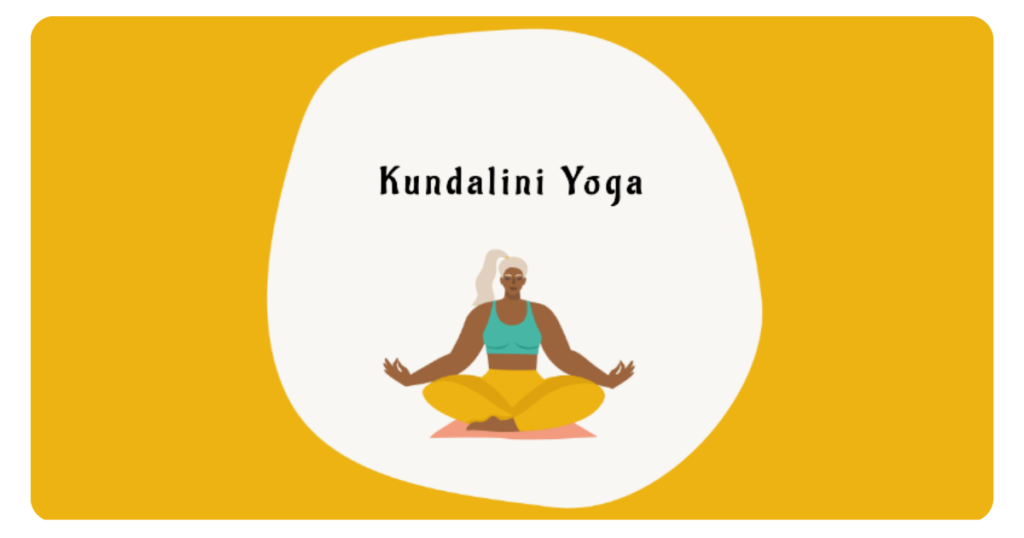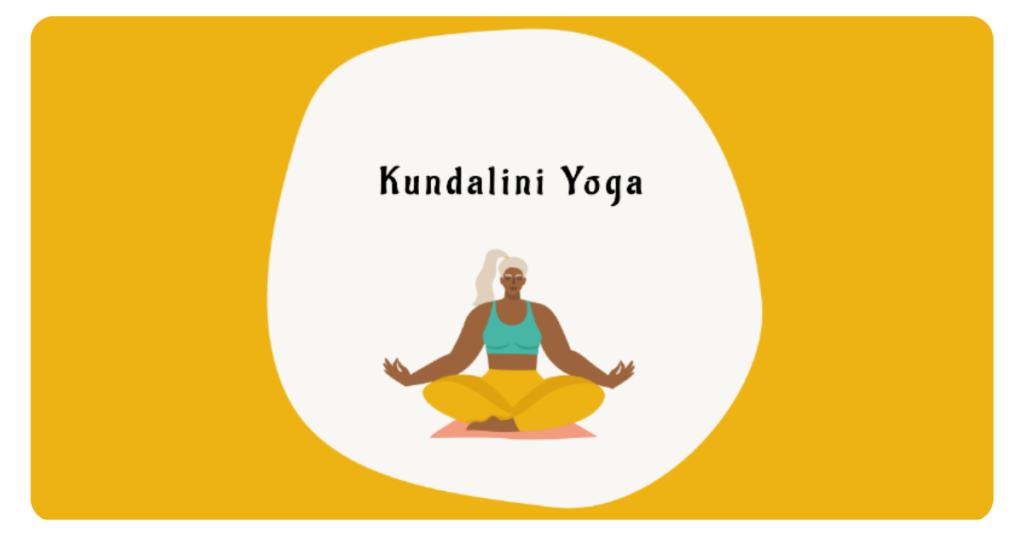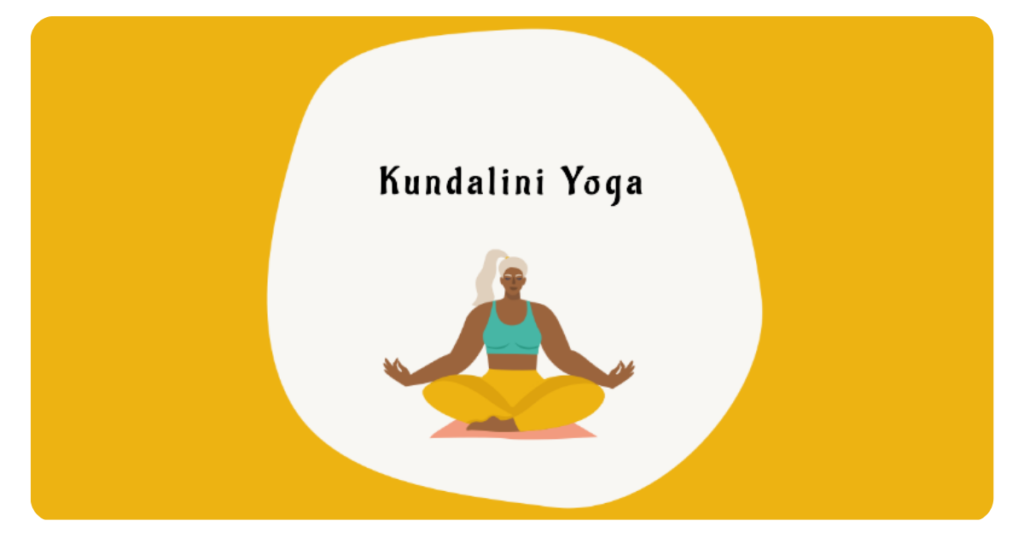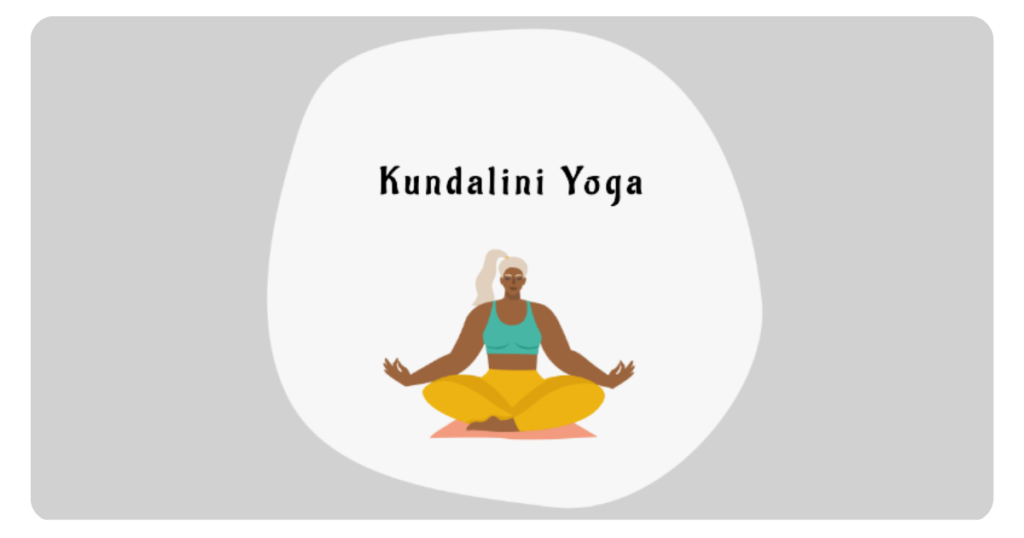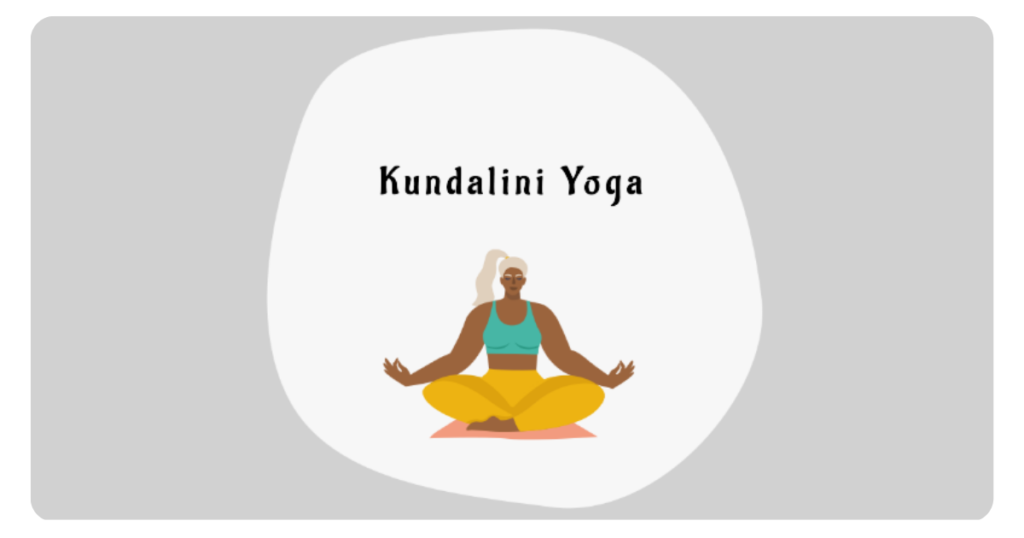
Kundalini yoga is an ancient practice focused on awakening your kundalini energy through specific postures, breathwork, mantras, and movements. For beginners, it offers a revitalizing and transformative experience that works on your physical, mental, and spiritual levels.
While it may seem intimidating at first, Kundalini yoga is actually perfect for those new to yoga. Its emphasis on slow, precise movements combined with mindful breathing and mantra meditation means it is easy to modify for any experience level. This guide will cover everything you need to know as a total newcomer to start your Kundalini yoga journey with confidence. Kundalini Yoga for Beginners
Kundalini yoga can provide a wealth of benefits, even for beginners, including:
The dynamic kriyas (exercises) and meditative practices work in harmony to challenge you physically while also promoting psychological and spiritual growth. By combining movement, breath work, mantra and mudra (hand positions), Kundalini works on raising your consciousness.
Key Principles of Kundalini Yoga:
With a beginner’s mind and regular practice, Kundalini can help unlock your true potential from within. This style is ideal for anyone looking to get started with yoga through a comprehensive mind-body practice.
What is Kundalini Yoga?
Kundalini yoga is a revitalizing mind-body practice that combines physical postures, breath work, mantra, and meditation. The term “kundalini” refers to the dormant energy located at the base of the spine. The goal is to awaken this energy and have it travel upwards through the chakras, resulting in heightened awareness and consciousness.
While it shares some similarities with other yogic styles like Hatha, Kundalini has a very distinct approach. It is sometimes called the “yoga of awareness” because of its focus on integrating physical exercise with chanting, meditation, and breathing techniques to influence your mental and spiritual state.
Here are some of the core principles that set Kundalini apart:
While Kundalini involves physical asana practice, the real focus extends far beyond just stretching or exercise. The kriya sequences, breath work, mantra and mudras are all meant to raise your kundalini energy for a transformative experience on all levels – physical, mental, and spiritual.
Table of Contents
Benefits of Kundalini for Beginners
Kundalini yoga offers a wide range of potential benefits that make it an excellent choice for those new to yoga. Because it incorporates so many elements like postures, breath work, mantra and meditation, it can have a holistic, full-body impact.
Some of the key benefits beginners can experience include:
Physical Benefits
Mental/Emotional Benefits
Spiritual Benefits
While physical fitness is certainly one outcome, the true beauty of Kundalini lies in its ability to positively impact your whole being as a beginner. With regular practice, you can experience profound shifts in your energy levels, mental clarity, and overall sense of wellbeing.
Getting Started with Kundalini Yoga
One of the best things about Kundalini yoga for beginners is how accessible it can be when approached correctly. You don’t need to have any prior experience with yoga or high levels of strength and flexibility to begin. All you really need is an openness to try something new!
What You’ll Need
Having the right supplies can help you ease into a Kundalini practice comfortably as a newcomer:
Finding Classes and Instruction
For total beginners, taking some Kundalini yoga classes from a qualified instructor is highly recommended before attempting home practice. An experienced teacher can ensure you learn the proper techniques for things like breath work and meditation from the start.
Look for Kundalini yoga classes at your local yoga studios, community centers or gyms. Many locations offer beginner-friendly sessions aimed at introducing the core concepts and kriyas.
If you can’t find in-person classes nearby, there are also many excellent online resources for Kundalini yoga instruction these days:
Having an instructor, whether in-person or via online videos, can guide you through your first few sessions. This allows you to learn proper form and experience the unique breathing exercises and meditations.
Creating a Home Practice Space
While classes are great for beginners, Kundalini yoga is also very well-suited for home practice once you’ve learned the basics. Having a designated space, even if small, can help inspire a consistent routine.
When setting up your home practice area, look for:
You really don’t need much space – just enough room to lay out your mat and move around a bit. Making your practice area feel peaceful and sacred can help you treat the space with reverence.
Small touches like displaying inspiring imagery, burning incense or sage, and playing meditative music can enhance the experience. But ultimately, the most important thing is clearing a space that allows you to show up and be present during your Kundalini practice.
The Basic Kundalini Yoga Poses for Beginners
While Kundalini yoga incorporates kriyas (exercise sets) that can get quite complex and challenging, there are some basic postures and exercises that are perfect for beginners to start with. Learning and mastering these foundational asanas will help prepare your body and mind for the more dynamic practices.
As a beginner, focus first on these simple but powerful exercises:
Sat Kriya (Posture of Truth)
Sat Kriya, sometimes called the posture of truth, engages the core and fire energy within. It looks deceptively simple but can be intense:
This pose may seem stationary, but you’ll quickly feel it fire up your navel center and challenge your willpower. Sat Kriya stokes your inner furnace while training arm and core strength.
Ego Eradicator
Appropriately named, the Ego Eradicator pose is an integral part of Kundalini yoga designed to help shed limiting beliefs and habits. Here are the steps:
This dynamic move works the entire body while linking the movement to your breath rhythm. It’s invigorating while also defusing the ego through its repetitive nature.
Spine Flexing (Veeraasana)
Working on spinal flexibility, mobility and strength is key in Kundalini. The aptly named Spine Flexing pose achieves this:
This gentle backbending pose limbers up the entire spine while linking breath and movement. It’s a great way for beginners to awaken energy flow along the spine.
Fire Breath (Agni Pranayam)
Of course, no beginner’s introduction to Kundalini would be complete without learning the signature Fire Breath (Agni Pranayam):
Fire Breath immediately stokes your inner energy and focus. It may feel strange at first for beginners but gets easier with practice. Many find it invigorating and calming at the same time.
These are just a few examples of foundational Kundalini poses and exercises that beginners can start incorporating. As you’ll see, each one has a specific purpose and effect. Master these basics, and you’ll be ready to move on to more intermediate kriyas. “How to practice kundalini yoga :A Comprehensive Guide”
Breathing Techniques in Kundalini
Breath work is absolutely vital in Kundalini yoga. The practice places a major emphasis on different breathing patterns and techniques to direct energy flow and shift consciousness.
As a beginner, getting comfortable with some of the core Kundalini breathing exercises is essential. Here are some of the most important ones to learn:
Breath of Fire (Agni Pranayam)
We’ve already covered the Fire Breath briefly, but it’s worth going more in-depth on this fundamental Kundalini practice. Breath of Fire, also called Agni Pranayam or Skull Shining Breath, rapidly raises your energy and consciousness.
How to Practice Breath of Fire:
This vigorous breathing technique takes practice but can induce a meditative, energizing state when done properly. Breath of Fire purifies, heats and distributes prana (life force energy).
Beginners should start slowly with short cycles and focus on the mechanics. Having an instructor provide guidance is very helpful at first.
Sushumna Breath (Alternate Nostril Breathing)
A gentler but equally powerful Kundalini breathing pattern is Sushumna Breath, also known as Alternate Nostril Breathing or Nadi Shodhana Pranayama. It helps balance and purify the energetic channels in the body.
Here are the steps for Sushumna Breath:
This simple nasal breathing exercise helps balance the hemispheres of your brain and purify energy channels. Beginners can start with just a few rounds per day.
Long Deep Breathing (Anahat Chowk)
Sometimes called Four-Part Yogic Breath or Anahat Chowk in Kundalini, long deep breathing helps oxygenate the blood and cultivate vital life force.
The steps are straightforward:
Long Deep Breathing is a grounding exercise that brings focus and mindfulness. The pauses help you tune into the rhythm and presence of each breath cycle.
Cooling Breath (Seetkari)
If you need to cool down either physically or energetically, Seetkari or the Cooling Breath can provide relief. It activates a calming, soothing effect on the body and mind.
To practice Cooling Breath:
Along with mastering Breath of Fire, learning these different nasal breathing techniques will give you a solid Kundalini breathwork foundation. The breathing patterns work in synergy with the kriyas and meditations to produce profound effects.
Proper breathing is absolutely essential in this yoga style. Take your time as a beginner to get the techniques down before moving into more advanced practices.
Incorporating Mantras and Mudras
Alongside the physical postures and breathwork, the use of mantras and mudras (hand positions) is another distinguishing feature of Kundalini yoga. These practices are meant to further activate and direct your energy in specific ways.
What are Mantras?
A mantra is a repeated sound, word or group of words that are chanted or internally focused on. Mantras are believed to have vibrational frequencies that can shift your consciousness when practiced consistently.
Some key things to know about mantras in Kundalini:
Some of the core mantras used in Kundalini include:
Even if the meanings are not fully comprehended, chanting mantras correctly can have a centering, focusing effect for beginners.
What are Mudras?
Mudras are specific hand positions or gestures that act as “energy circuits” to channel flow and produce intended effects. Common mudras in Kundalini include:
Each mudra is meant to guide energy in specific ways and is often synchronized with mantra, breath and posture during a kriya. For example, Gyan Mudra is used to calm the mind, while Lotus opens energy channels.
Beginners should learn the basic mudra hand positions and their meanings. Over time, comfortably integrating the mudras and mantras will enhance your Kundalini practice.
A Sample Kriya with Mantra and Mudra
To illustrate how the elements come together, here is an example of how mantra and mudra may be incorporated into a Kundalini exercise:
Ego Eradicator Kriya with Sat Nam Mantra:
In this case, the Sat Nam mantra and alternating hand mudras help shift energy and awareness as you perform the Ego Eradicator kriya. The combination is meant to start breaking down the ego.
It takes time and practice to smoothly coordinate the breath, mantra chanting, mudras and movements together. Be patient, focused and keep showing up for your Kundalini practice as a beginner. The layers will gradually merge into an immersive experience.
Tips for Beginners Practicing Kundalini Yoga
Starting any new physical and spiritual practice can feel intimidating at first. Kundalini yoga is no exception with its unique techniques like Breath of Fire and integrating mantras and mudras.
However, approaching it with the right mindset and following some helpful tips can make Kundalini much more accessible for beginners.
Go at Your Own Pace
One of the biggest mistakes beginners make is pushing themselves too hard too fast. Kundalini can be very intense and rigorous, especially when new to it.
Don’t get caught up comparing yourself to others or trying to match experienced practitioners from day one. Start gently, and work within your personal limits and comfort levels.
For example, if a set calls for 5 minutes of Breath of Fire, start with just 1-2 minutes and build up over time. Modify or take breaks as needed. There’s no benefit to straining through something your body isn’t ready for.
Listen to Your Body’s Signals
Along those lines, tuning into your body’s signals and responses is crucial with a practice like Kundalini. Some days, you may feel energized and able to work at a higher intensity. Other days, you may need to pull back and focus more on breathwork and meditation.
Never force yourself to “power through” if experiencing dizziness, nausea, or sharp pains during your practice. Stop, reassess, and adjust. Kundalini can be vigorous, but you should never feel out of control or risk injury.
Checking in with yourself both mentally and physically will reveal when to push and when to back off for that day.
View Challenges as Opportunities
Struggles and difficulties are inevitable when you begin Kundalini yoga. Physically, you may find some of the kriyas and postures quite challenging at first until building strength and flexibility.
Mentally, you may have a hard time quieting the mind during meditation or synching movement with breath patterns. Spiritually, you may experience intense energy shifts or emotions arising.
Rather than getting frustrated, try to view these challenges as opportunities. They are all part of the process of awakening the kundalini energy. Have patience, observe with curiosity, and keep practicing with compassion for yourself.
Don’t Get Discouraged
Staying encouraged is key, especially when challenges and obstacles inevitably pop up. Remind yourself that everyone, including master practitioners, started as beginners and faced their own hurdles along the way.
It’s natural for it to feel awkward or uncomfortable until your body and mind acclimates. The techniques do become more intuitive over time. And each time you show up on the mat, you’re making progress, even if it’s not obvious in the moment.
If you find yourself struggling or hitting a wall, refocus on your “beginner’s mind.” Let go of expectations and the idea that you have to be at a certain level. Simply embrace the state you’re in and keep taking one step at a time.
Commit to Consistent Practice
Consistency and discipline are essential for truly experiencing the transformative benefits of Kundalini yoga. Unlike a workout that yields physical results fairly quickly, Kundalini works on you at much deeper levels.
The awakening process requires patience, commitment and showing up regularly. While it’s perfectly fine to start small, aim to build a consistent daily routine, even if it’s just 15-30 minutes per day.
Having a set time and place for your home practice can help make it a non-negotiable habit, just like brushing your teeth. Regular practice is what allows you to fully integrate the techniques and experience true growth.
Be gentle with yourself as you find your groove. But also understand that, like anything worthwhile, you’ll get out of Kundalini yoga what you put into it.
Kundalini Yoga Classes vs Home Practice
As a beginner to Kundalini yoga, one of the biggest decisions you’ll need to make is whether to start by taking classes or dive into home practice with books and videos. Both options have their own merits and drawbacks to consider.
The Benefits of Kundalini Classes
For most beginners, taking in-person classes from a qualified Kundalini instructor is highly recommended, at least in the early stages. Here are some of the key advantages:
Proper Form and Technique
An experienced teacher can observe you and provide invaluable feedback to ensure you are practicing the postures, breathing exercises, and movements with proper alignment and technique. This helps prevent injury and frustration.
Seemingly simple movements like Breath of Fire are easy to do incorrectly when self-teaching. Having an expert’s guidance accelerates the learning curve.
Build a Strong Foundation
Group classes allow you to start building a solid foundation in the core principles, kriyas, mantras and mudras of Kundalini under a teacher’s supervision. You’re less likely to pick up bad habits or misunderstandings.
A step-by-step progression also helps you integrate the unique elements of Kundalini in the correct order without getting overwhelmed.
Experience the Energy
There’s something powerful about practicing Kundalini yoga in a room full of people moving, breathing and chanting in synchronicity. The combined energy and vibrations can amplify your experience.
You may find it easier to surrender to the process and go deeper with an experienced guide holding space.
Community Connection
Along with the teacher, participating in a class lets you become part of the local Kundalini community. The ability to connect with fellow practitioners can be motivating and supportive, especially as a beginner.
You may form bonds and find accountability partners to continue growing together.
Variety in Practice
Most studios or centers will have a rotating schedule of different types of Kundalini classes and series. This exposes you to more variety in the kriyas, meditations and teachings you experience.
An instructor can challenge you in new ways each session.
The main downside is that group classes can be more expensive, inflexible with timing, and you may need to commute to attend them consistently.
The Case for Home Practice
While in-person training is ideal upfront, at some point a regular home Kundalini practice becomes essential. Let’s look at the advantages of doing it yourself:
Convenience and Flexibility
You can practice anytime, anywhere, for any duration with zero commute. It’s much easier to stick to a consistent routine when it fits your schedule.
Want to do Kundalini first thing in the morning or late at night? No need to work around class times. You go at your own pace and flow.
Cost Savings
Paying for drop-in classes can add up quickly over time. Following along with books, video courses or apps for home practice is far more cost-effective in the long run.
You can invest in quality resources upfront and reuse them perpetually.
Go at Your Own Pace
When you practice alone, there’s no pressure to keep up or look a certain way. You can fully surrender to your personal journey and experience without any self-consciousness.
Feel like lingering longer in a posture or spending more time with meditation? You have that freedom in a home environment.
Build Self-Reliance
Ultimately, a vital aspect of Kundalini is learning how to awaken and navigate your own energetic experience. Home practice forces you to tune inward and become self-reliant.
Not having a teacher to lean on can actually accelerate inner awareness and growth.
The key drawback is that you miss out on the instructional guidance, adjustments, and energetic support a group setting provides. Motivation and self-discipline are also more challenged.
Balancing Both Options
The ideal approach for many Kundalini beginners is to start by taking introductory classes to build a solid base. Once you’ve learned proper form and experienced the kriyas under an instructor, you can transition to maintaining your own daily home practice.
This allows you to get the best of both worlds — initial expert guidance followed by the flexibility and self-reliance of your personal routine. Most dedicated practitioners eventually find a balance between occasional group classes and consistent individual practice.
Whichever path you choose, the most important thing is to start and stick with it. A little bit of Kundalini yoga each day can open up profound transformations for beginners.
Frequently Asked Questions About Kundalini for Beginners
Even after covering the core concepts and practices, many beginners still have lingering questions about Kundalini yoga. Here are some of the most frequently asked questions to provide more clarity:
Is Kundalini Yoga Safe for Beginners?
Absolutely! When learned correctly and practiced with patience, Kundalini yoga is completely safe for people of all experience levels, including total beginners. The key is starting slowly and not pushing yourself beyond your current abilities.
Work within your limits, listen to your body, and don’t be afraid to modify as needed. An experienced instructor can ensure you are doing the exercises properly to avoid injury. Approach it gently and Kundalini can be very beginner-friendly.
How is Kundalini Different Than Other Yoga Styles?
While all yoga styles share some common components like physical postures and meditation, Kundalini stands out for its particular emphasis on awakening kundalini energy through kriyas, pranayama, mantra and mudra.
The acute focus on activating the chakras and nadis (energy channels) through dynamic movement combined with chanting, breath patterns and hand positions is unique to this tradition.
Many find Kundalini to be more ritualistic and vigorous compared to other styles. But modifications can make it just as accessible as other yogic paths.
What Are Some Common Myths or Misconceptions?
A few misconceptions often prevent people from trying Kundalini yoga:
It’s too intense for beginners – When modified appropriately, it can absolutely be learned gradually by anyone.
You have to be religious or spiritual – Kundalini can be practiced as a purely physical exercise if preferred.
It’s dangerous to awaken kundalini energy – This process happens slowly and organically with regular practice over time.
The myths often stem from a lack of understanding about what Kundalini truly is. Having an open mind and easing into it will dispel any unfounded fears.
How Quickly Can I Expect to See Results?
This is a very common question, but it’s important to have realistic expectations. The time it takes to experience tangible results can vary significantly from person to person based on:
For some, benefits may start to emerge within a few weeks of regular Kundalini practice. For others, it may take months before you really start to feel its profound impact.
The general guidance is to commit to at least 40 days of daily practice before evaluating your experience. This gives your mind and body time to adapt. Be patient and have faith in the process.
Kundalini works in gradual, sometimes subtle ways. If you stay dedicated and embrace a beginner’s mindset, the transformative effects will make themselves known in due time.
Kundalini Yoga for Beginners
Conclusion
Kundalini yoga is a revitalizing and transformative mind-body-spirit practice that is perfectly suited for beginners. By combining dynamic kriyas (exercises) with pranayama breathwork, meditation, mantras and mudras, it gradually awakens your kundalini energy.
While some of the techniques like Breath of Fire may seem daunting at first, approaching Kundalini systematically allows you to build a solid foundation. Starting with basics like Sat Kriya, Long Deep Breathing and simple mantras lets you integrate the practice layer by layer.
The key for beginners is to go at your own pace, listen to your body’s signals, and view challenges as opportunities for growth. Having patience and committing to consistent practice is what yields the profound benefits over time.
Some of the many potential benefits you can experience from regular Kundalini include:
The merging of ancient spiritual technology with physiological science makes Kundalini yoga a complete yogic path. Yet it remains beautifully accessible even for those just starting their journey.
Whether through group classes or home practice, all you need is an open beginner’s mindset. Show up on your mat consistently, follow the techniques to the best of your ability, and incredible changes will begin unfolding.
The kundalini awakening process requires patience and dedication. But the profound impact it can have on your physical vitality, mental clarity and spiritual awakening make it all worthwhile.
If Kundalini yoga resonates with you, don’t hesitate to start exploring this transformative tradition today. Your doorway to heightened awareness and a revitalized sense of wellbeing awaits!
